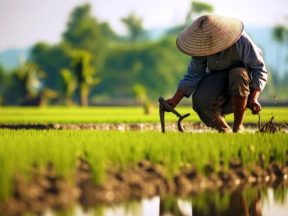Bolivia. The Andean potato.
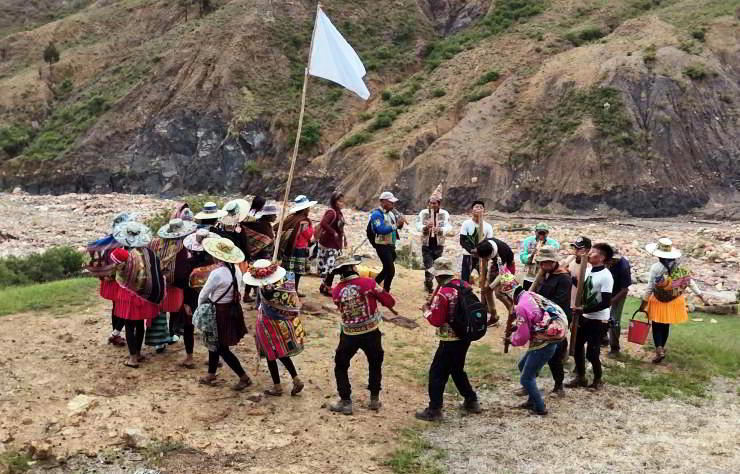
Andean communities have a special process for freezing and drying potatoes. We take a look.
The terms ch’uño or tunta come from the Quechua and Aymara languages, spoken in the Andes, Peru and Bolivia. Both terms mean “frozen and dried potatoes”, used for their conservation in the Andes. Of course, both products have different production processes.
According to oral testimonies, the origin of the Andean chuño or tunta is lost in the ancient culture of the ancestors of the Andes. According to anthropologists, the chuño is the oldest invention of Andean man. It is thanks to its practice that indigenous communities keep this tradition alive and its elaboration and teaching is passed down from generation to generation.The preparation of the chuño and the tunta requires time and space because it cannot be done at any time or in any place, but in its own time and place. The time is known as qhasay pacha (winter) and the place as ch’uñuna (place of production of chuño). According to the Andean calendar, it corresponds to the month of Inti Raimi (sun festival), the month of Chaqra Qunakuy Quilla (agricultural cycle), the month of Papa and Sara Apaykuy Amuray (preservation of potato and corn crops).
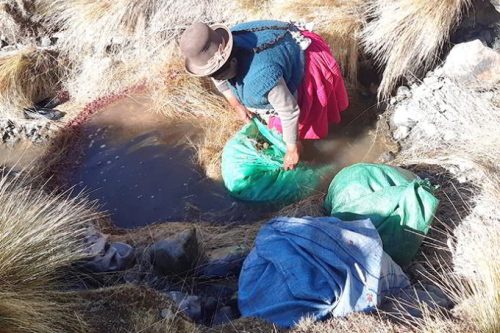
The origin of the Andean chuño or tunta is lost in the ancient culture of the ancestors of the Andes. File swm
According to the Gregorian calendar, this period is from June to July. During these two months, the indigenous communities of the Andes dedicate themselves to storing in warehouses everything they need for the period of scarcity, which is from August to February. That is why during this period the communities try to save everything they have, even for the animals.
The process of preparing chuño begins with the selection of potatoes at the beginning of June, because they must be ready at that time. Generally, potatoes are selected in three classes or levels: the largest ones, intended for food, are kept in a hole covered with straw underground until the beginning of September.
The second level is represented by the seed, which must be the size of a chicken egg and be healthy, and which is kept underground until September so that it remains strong.
The third and fourth varieties are suitable for the preparation of chuño, because they are vermella potatoes, burned by the sun and not directly edible because they are acidic. They must therefore be processed in the chuño. However, there are also some varieties suitable for the preparation of chuño, such as papa luk’i, qamisaya and others.
The next step is to observe atmospheric phenomena, such as the wind, the Sun, the Moon and the stars. To check the formation of frost, you can for example place a small portion of potato in the space where it forms. In other cases, thayacha is prepared (a mixture of wheat flour and cooked corn, also considered Andean ice cream) and placed on a straw bed on the roof of the house.
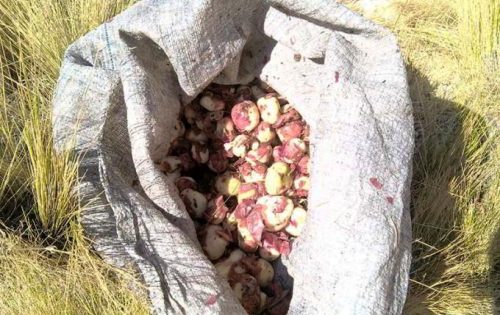
According to anthropologists, the chuño is the oldest invention of Andean man. File swm
The next day, if it has frozen well, it means that it is time to prepare the chuño, so you must transfer the potatoes intended for this procedure. If nothing has frozen, you must wait a few more days, because it is still early. Once the frost has been confirmed, the potatoes are transported by pack animals (donkeys, llamas and mules) from the collection sites to the place where the chuño is prepared. To prepare the bed, chopped straw is also used.
Starting at four in the afternoon, the straw bed is prepared and the potatoes are evenly distributed on top. At the end of the day, they return home, but the father and the eldest son stay to water the potatoes during the night. Between eight and nine in the evening they spray the potatoes with water because at that time the first frost of the night begins. Then they retire to rest in a place they have prepared to protect themselves from the cold, which at that latitude reaches between -5 and -6 °C. At eleven in the evening, they have to add water again because that is when the frosts occur and the third time between 4 and 5 in the morning. They then return home. At ten in the morning, everyone goes to see how the chuño is doing: if it is good, they start to trample it in heaps to squeeze the water out of it.
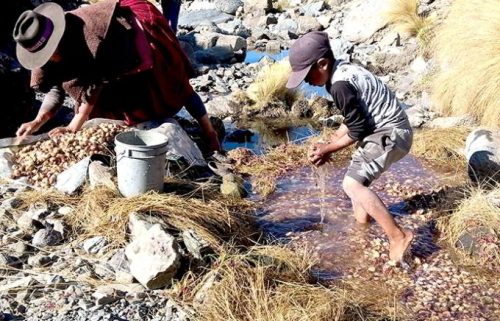
Thanks to their practice, indigenous communities can keep this tradition alive, passing down its elaboration and teaching from generation to generation. File swm
Around midday, they prepare the muraya thuti (fresh potatoes thawed and cooked) with their ch’arkikanka (dried grilled meat), specially prepared for the occasion. In the afternoon, it is spread out again so that the frost can finish the last remaining potatoes. The next day, the sun shines and the chuño dries.
The process of preparing the tunta is different, only the beginning is similar: the potatoes are spread out on the bed of straw and must be frozen for about three nights; then they are trampled and taken to another bed. In this way, the sun’s rays do not reach the potatoes as the straw protects them. The potatoes rest for about two weeks after which they are left to dry in the sun.
Once the production process is finished, the product is gathered and stored. This is how the process of producing chuño and tunta ends in the Andean communities of South America. (Open Photo: Andean Community in celebration. File swm)
Jhonny Mancilla Pérez


